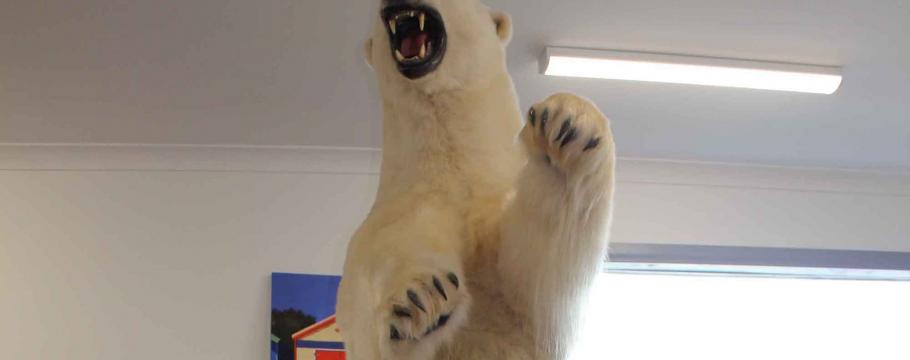
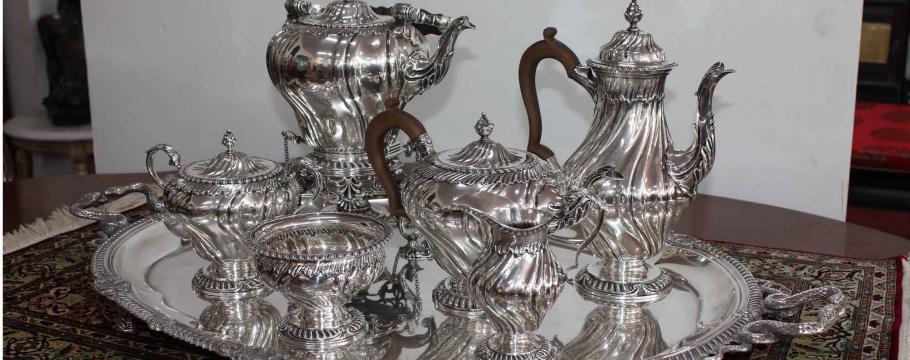
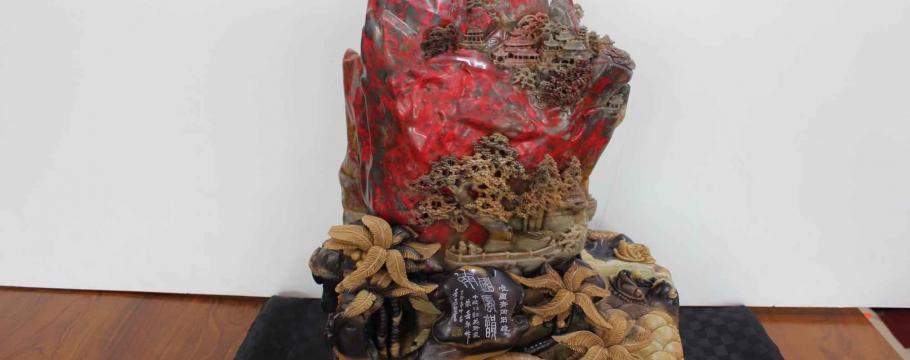

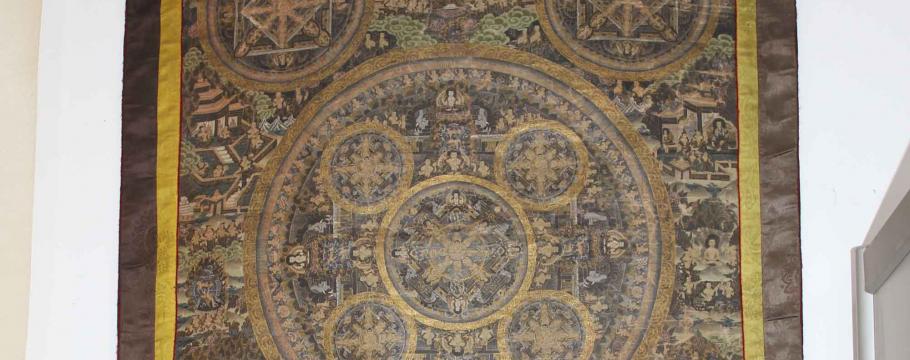
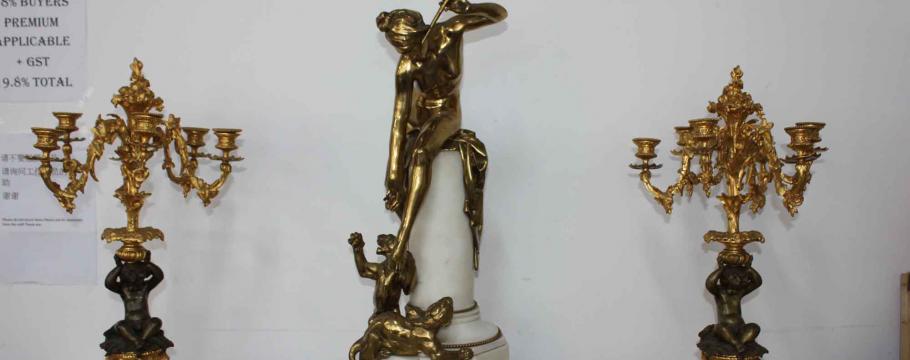
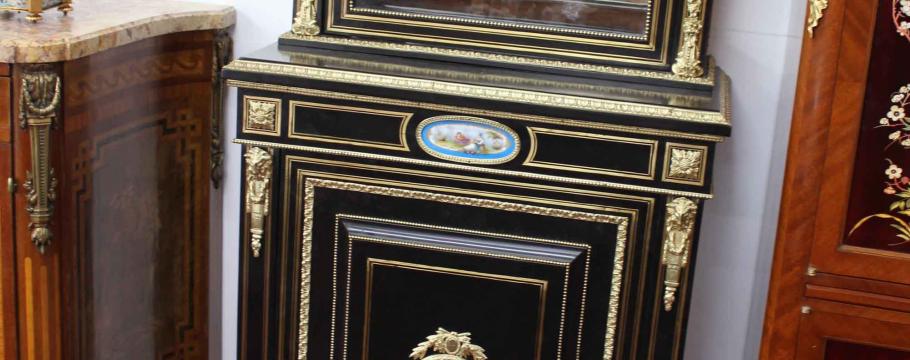

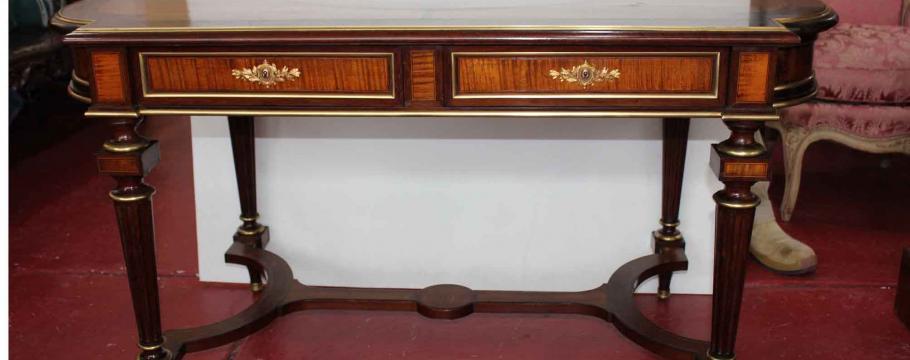
Giant polar bear dominates auction thinking
Author: Richard Brewster | Posted: 1st March, 2008
A stuffed life-size polar bear, which as its head almost touches the ceiling towers over everything else at in Kim’s Auctions rooms at 327-329 Warrigal Road, Burwood, is the dominating feature of his forthcoming auction – and first for 2018 – from 11am Sunday March 11.
Owned by Queensland-based Terry Dalkos, the bear was purchased from a Canadian supplier and legally imported with a Convention of International Trade in Endangered Species (CITES) certificate.
A local taxidermist prepared the mount and attached the metal CITES tag underneath the stand.
A collection of English sterling silver features an aesthetic style jug with oriental floral decoration gilding, fully hallmarked for London 1882-4 by John Aldwinkle and James Slater, and matching goblet pair.
Popular in England and America in the late 19th century when Asian art once more became fashionable, the jug is highly prized for its excellent engraving and pattern of partial gilding (referred to as parcel gilding).
This was a misunderstanding of the word “partial” by silversmiths who, although highly skilled and talented, were unable to read.
Thus, the word “parcel” entered the English language as a term used to describe this type of incomplete highlighting of silver by gold.
Elkington, for whom Aldwinkle worked, were the main English silversmiths for this type of gilding, while in the United States Tiffany and Gorham were the primary manufacturers.
Hand made and extremely time consuming to manufacture – unlike most 19th century creations that were instead produced by machine – these particular Victorian objects are highly prized by collectors.
A mid-Victorian fully hallmarked Cellini pattern ewer is another strong buyer attraction.
Modelled on the work of the famous 16th century Italian sculptor Benvenuto Cellini – considered the greatest artist, sculptor and silversmith of all time – the ewer is based on neoclassical Roman styles.
During the 19th century, after completing university studies educated young upper class English gentry undertook extensive travel visiting classical Italian sites as part of their further education and life experience.
On their return and influenced by their European experiences, they usually embarked on a career of collecting fine objects including paintings, ancient figures, silver and micro-mosaics – such as the Cellini-style ewer.
Another sterling silver attraction is the George V tea and coffee service carrying the hallmark for Charles Stuart Harris of London 1929.
It includes a large kettle on a stand, coffee pot, teapot, covered sugar bowl, slop bowl and milk jug.
The auction contains a rare 19th century Chinese chicken blood coloured stone in which is delicately carved pagodas, mountains and floral features.
A similar creation sold recently for more than $1 million at Baoli Auctions in Beijing.
Other attractions include a Tang Dynasty (618AD-907AD) pottery camel and rider, complete with Wollongong University certificate verifying its age, as 19th century silk Mandara and a massive gilt bronze, signed by Carrier Belleuse, featuring a group of girls and a panther.
Furniture includes a 19th century Sevres panel two-door ormolu mounted display cabinet and an early 19th century French rosewood with inlaid beechwood two-drawer centre table.
One of the more interesting paintings is a portrait by French artist A. Farem.





